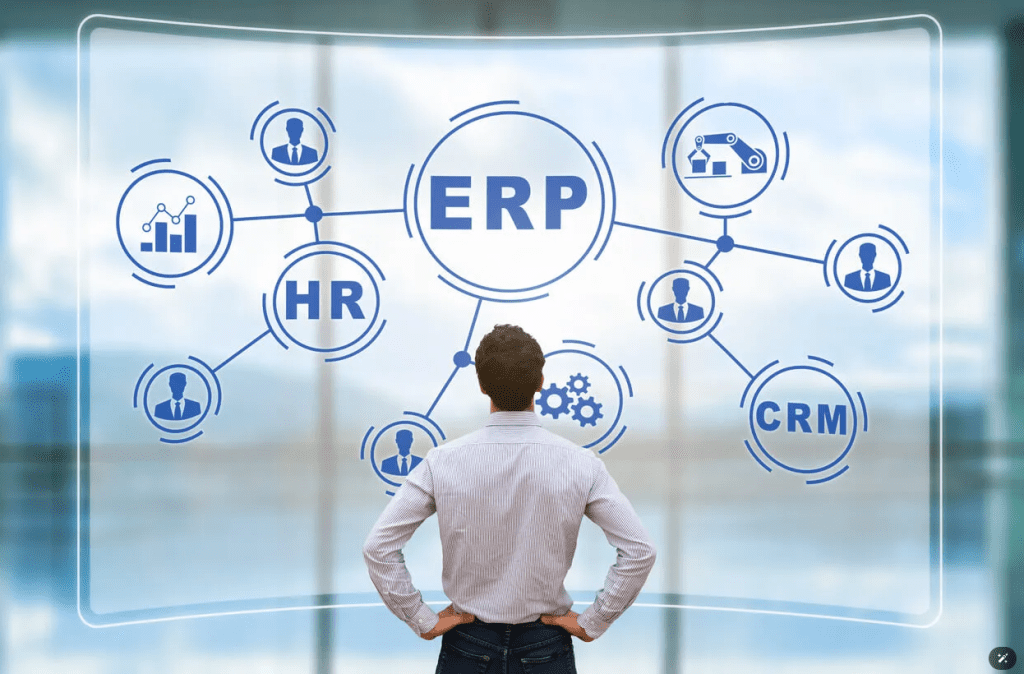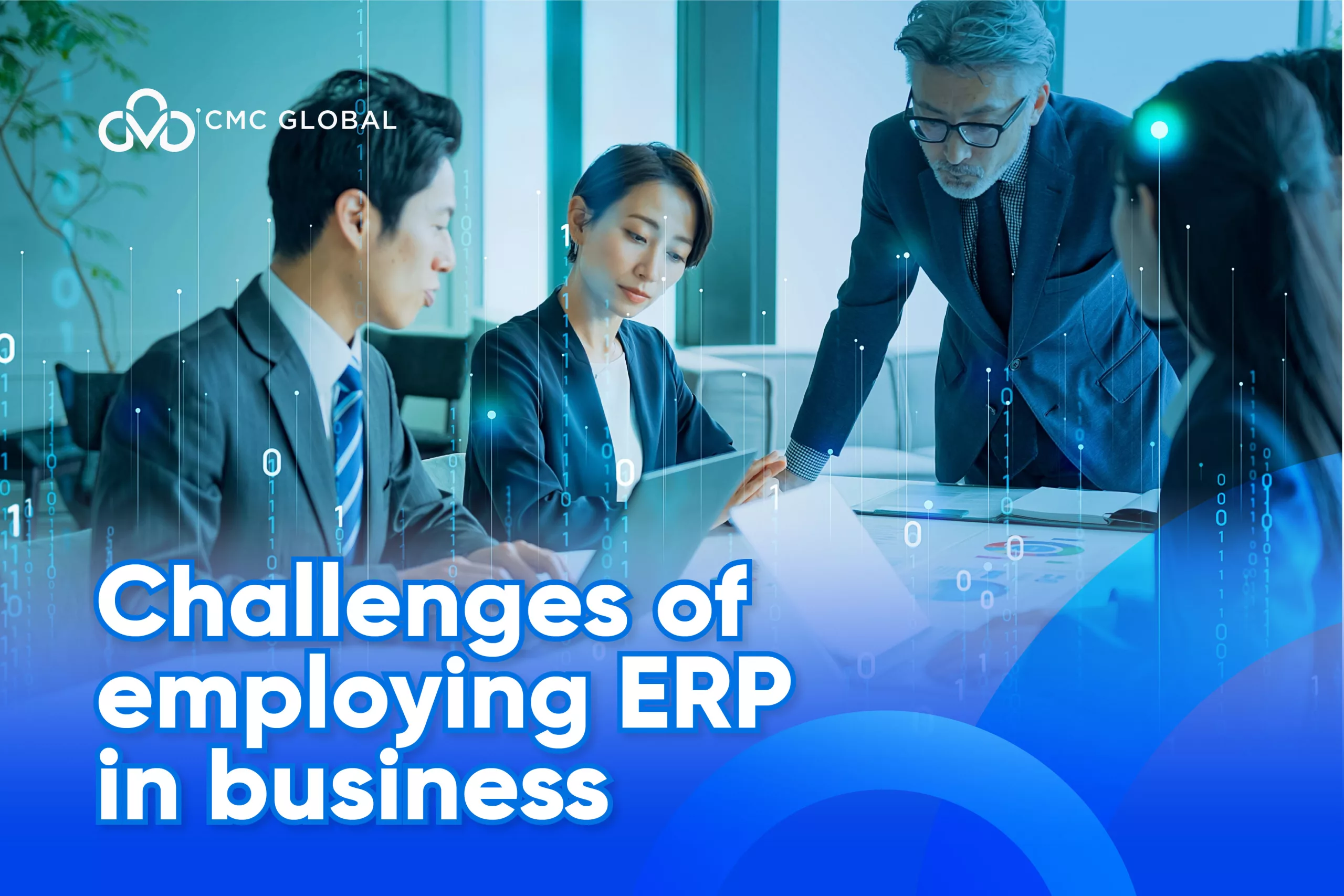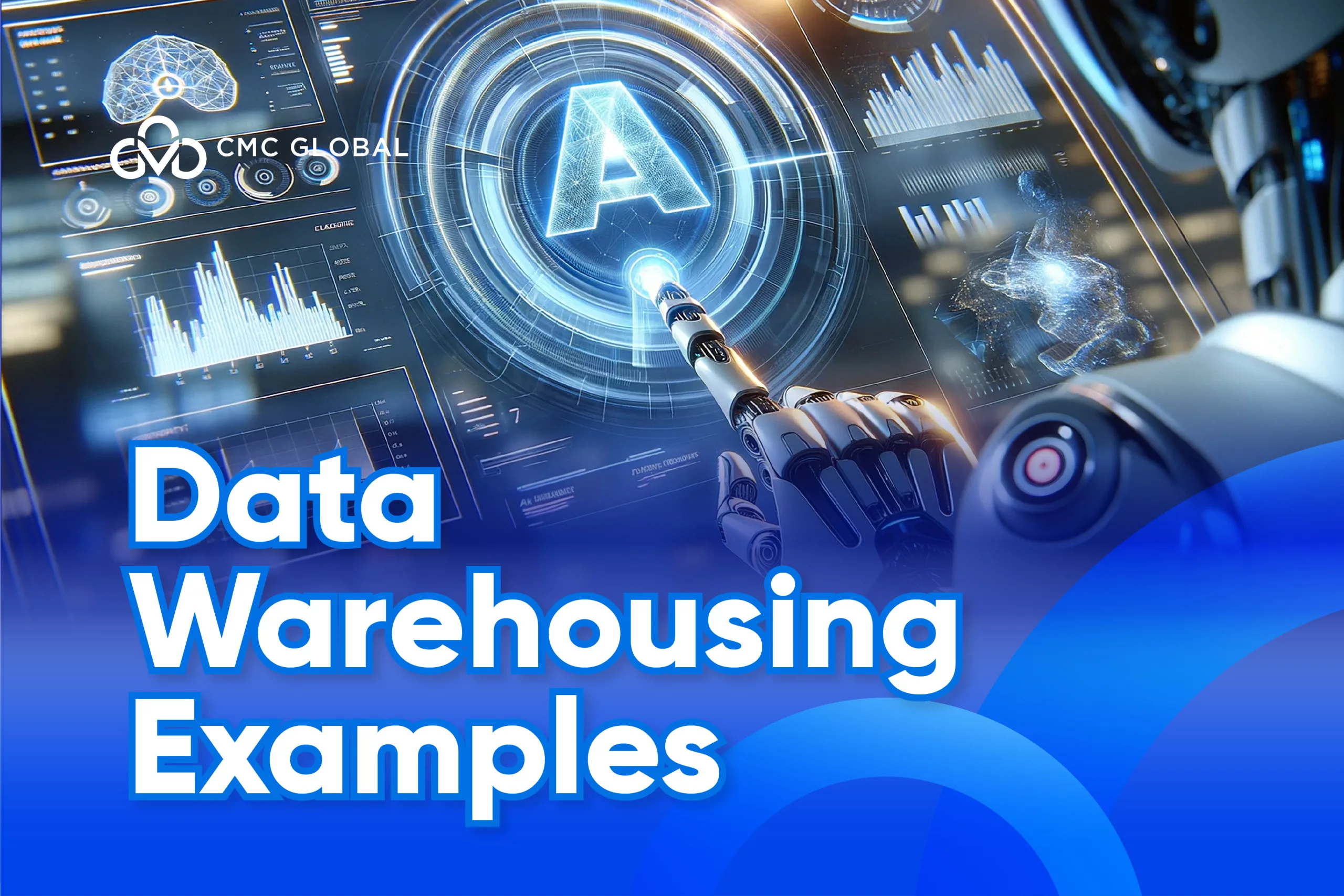Implementing Enterprise Resource Planning (ERP) is a huge challenge for most of organizations. Connecting all components of operations, including systems, devices, people, products, and processes, requires a significant amount of resources. A major organization may need up to 5 years to implement successfully.
This post is all about ensuring that you understand the forthcoming complexity of implementing an ERP so that you may plan to limit the cost, time, and risks connected with the ERP deployment.
Why is Implementing ERP a Difficult Task?
Implementing ERP is a difficult task as it is a complex process that affects the entire company. It causes a fundamental change in working processes, paving the way for automation rather than manual procedures.
It forces everyone to face the ERP deployment difficulty and engage with users and functional groups to develop a new solution. Because addressing such challenges necessitates top management engagement, the business requires a dedicated project team to represent all ERP platform users. As a result, it stresses the requirements of business operations at all levels and divisions.
Challenges of Implementing ERP In Business
The challenges of implementing ERP may vary depending on the business situation, size, industry, and previous experience with ERP. We have divided the challenges to improve the information feed.
- General Challenges
- Challenges in First-Time ERP Implementation
- Transition to New ERP Challenges
General Challenges of Implementing ERP Software in Business

#1 Resistance to Change
Fear of the unknown, familiarity with existing systems, and a lack of communication all contribute to changing resistance. Users used to conventional processes may hesitate to adopt new approaches that do not provide quick, evident benefits. Comments like “It’s always been like this” or “I don’t think it will work” reveal the underlying resistance.
How to overcome resistance
- Strategic Approach to User Buy-in: Obtaining interest, engagement, and support from various user groups early in the project reduces disagreement during critical stages. Ensuring that staff understand the benefits before implementation begins is critical.
- Change management methods: Informing staff on project milestones, setting up credible feedback channels, and encouraging idea generation all contribute to a collaborative atmosphere. Training sessions and recognizing user achievements create a positive environment, making users more open to upcoming changes.
#2 Data Integration
Data is the most crucial part of every organization, and inaccurate or unreadable data is unacceptable.
When organizations transfer old data into a new ERP system or from one ERP to another, they have the challenge of ensuring seamless integration while retaining data quality. Old data that has been used and preserved for many years may appear inaccurate or even invalid in the new ERP reality. Data inaccuracies and inconsistencies can have a negative influence on an ERP system’s performance and reliability.
Risk Mitigation solutions
- Plan and test each component: Invest in precise preparation and execution throughout the data transfer process. A strong data management procedure is critical for ensuring the confidentiality of information within the ERP system.
- Leverage technology for damage control: Use technology and methods to guarantee that data is accurate, accessible, and relevant for all organizational processes. Continuous monitoring and validation processes should be in place to quickly resolve discrepancies.
#3 Cost overrun
ERP implementations are notorious for frequently going over budget. There are two primary causes behind this.
- Inadequate Planning for the Unknown: The complexity of current modules, combined with the necessity for active interaction, might drive budgets beyond their limitations. Simply predicting costs based on known requirements is insufficient. Expecting the unexpected is critical, and a budget-plus-30% cost overrun is not uncommon.
- Overlooking ‘Soft expenses’: Creating practical system requirements is difficult, yet final budgeting frequently overlooks ‘ soft expenses.’ These include training time, potential operational downtime, external contract fees, and indirect infrastructure-related charges.
How to prevent cost overrun
Avoiding ERP budget overruns needs a thorough evaluation of critical issues. Data conversion, which is frequently underestimated, necessitates adherence to import, reconciliation, and data preparation schedules. Clear reporting requirements and financial allocations must be defined beyond conventional options.
Integrating ERP with third-party apps demands clear scope definition and communication. Managing development initiatives as mini projects inside a larger framework requires careful scoping, project management, communication, and realistic schedules.
#4 User adoption and training
Comprehensive user training is essential in ERP deployment to guarantee that all users understand their roles and the intricacies of the new system. Inadequate training exacerbates the problem, reducing productivity and frustrating users.
Solution
ERP investment requires extensive training programs, modules, tutorials, and detailed documentation.
Challenges in First-Time ERP Implementation
#5 Selecting the suitable ERP software and vendor
While there is no assurance that a company without expertise in your market would fail, you can expect a longer learning curve on the side of your new software provider.
Solution
- Choose a vendor with a proven history and committed future ambitions.
- Look for references, testimonials, or case studies of satisfied customers.
- Search for “vertical” solutions with a specific focus on your industry.
#6 Technical issues
Technical concerns in ERP deployment vary from the need for infrastructure upgrades, network reasons, mobile compatibility, and data migration issues. Inadequate planning can result in system downtime, decreased efficiency, connectivity issues, limited access, compromised data integrity, and significant security threats.
Mitigating Technical Risk
Organizations should do early technological requirements assessments, explore cloud adoption to mitigate on-premises problems and ensure the chosen ERP system can scale with changing technical needs.
#7 Employee Training Issues
First-time ERP adoption necessitates the hiring and training of personnel familiar with or proficient in using ERP. If the company cannot hire or train employees, consequences may include inefficient system use, data loss, and even disruptions in operations.
How to Build the Right Team
Reverse working can be a good answer, such as selecting an ERP with a well-trained team or establishing a simple ERP to learn. In addition, develop thorough training programs to acquaint personnel with the new system, and leverage Digital Adoption Platforms (DAPs) to improve user onboarding and ongoing support.
#8 Under and Over Automation Issue
Reaching the right level of automation is critical for ERP success. Automation may lead to human inefficiencies, defeating the goal of an ERP system. On the other hand, over-automation may cause human resistance, disrupt established workflows, and add unnecessary complexity to procedures.
How to Mitigate Automation Risks
Conduct a thorough review of existing processes to identify potential areas for automation and stages in automation to allow users to adapt and involve users in the planning process to guarantee alignment with their workflow requirements.
Transition to New ERP Challenges

#9 Disengagement and Engagement
Disengagement from outdated procedures may cause reluctance among employees who are used to familiar processes, resulting in productivity problems. Overcoming this obstacle demands addressing the unwillingness to give up current workflows and offering extensive training to enable a smooth transition.
However, achieving meaningful engagement with the new ERP system requires proactive initiatives. Users must adjust to the new interface, features, and workflow, which requires efficient communication and training programs.
To maximize the benefits of the new system, change management methods and user assistance must be prioritized.
#10 Poor project planning
Poor project planning in ERP implementation creates serious problems such as delays, budget overruns, and a lack of focus. Inaccurate time and budget estimates may result in unexpected charges and slow overall progress. Furthermore, a poorly designed project may experience scope creep, coordination challenges, and a lack of transparency, reducing the effectiveness of the ERP deployment.
To deal with bad project planning, companies should:
- Create a comprehensive project plan.
- Define clear objectives.
- Realistic Timeline
- Allocate adequate resources
Read more: Top 10 Best ERP Solutions for Small Businesses
Identify the Influencing Factors
Your company data reflects your fundamental business processes. While some of these processes are essential to your competitive advantage, others can limit your efficiency and overall progress.
At CMC Global, we start by identifying pain areas in your current processes in order to increase efficiencies and discover the best solution to support your long-term goals.
When deciding among the many ERP choices on the market, it is critical to analyze the features and benefits to find the best tool for your firm. While well-known companies such as SAP, Microsoft, and Sage may be familiar, you should also analyze each solution’s specific benefits and support.
Consulting with ERP specialists, like CMC Global, can help you choose the suitable ERP solution for your company.




